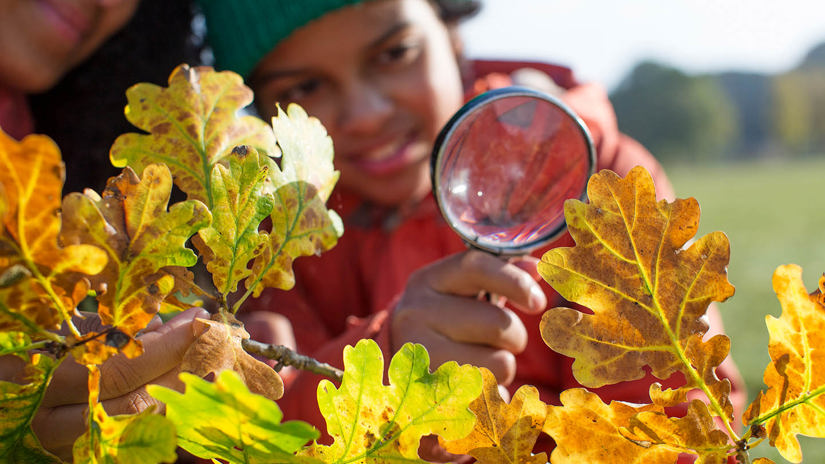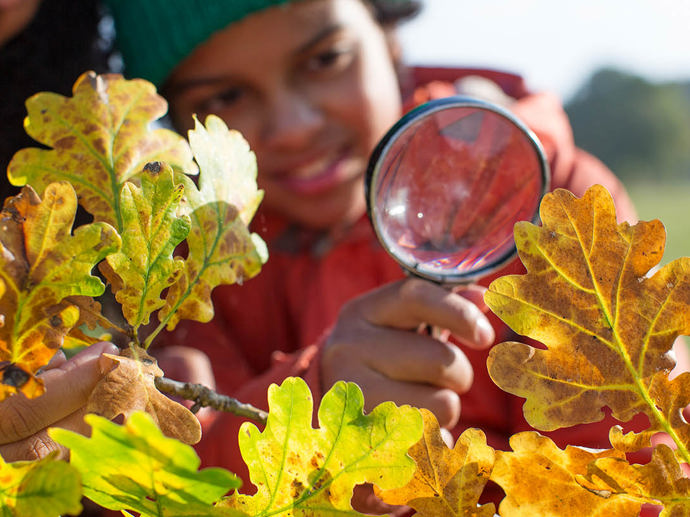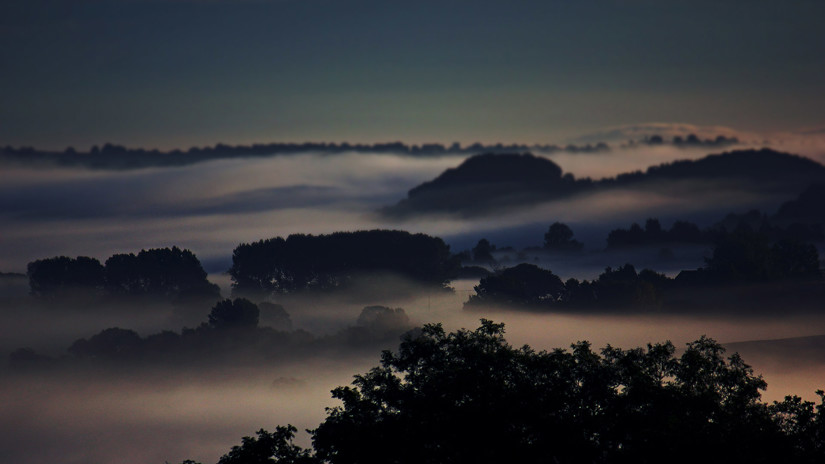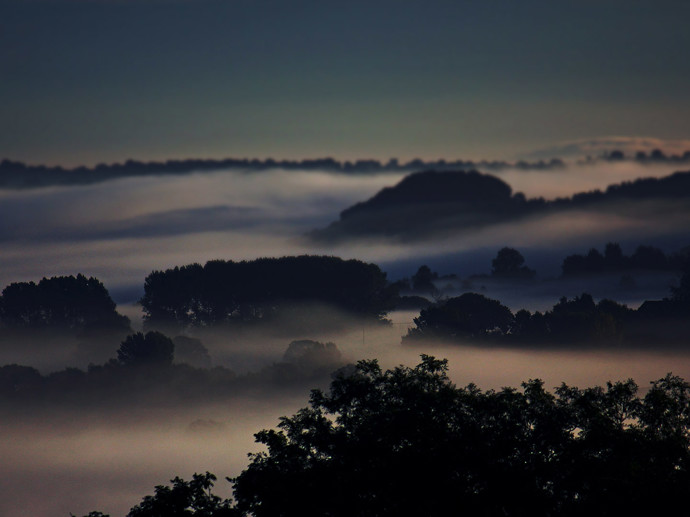Common name: common beech
Scientific name: Fagus sylvatica
Family: Fagaceae
Origin: native
Monumental, majestic, home to rare wildlife. Beech is an enchanting species and known as the queen of British trees. To wander beneath the leafy canopy, its cathedral-like branches spreading upwards, is an awe-inspiring experience.
Common name: common beech
Scientific name: Fagus sylvatica
Family: Fagaceae
Origin: native
Mature trees grow to a height of more than 40m and develop a huge domed crown. The bark is smooth, thin and grey, often with slight horizontal etchings. The reddish brown, torpedo-shaped leaf buds form on short stalks and have a distinctive criss-cross pattern.
Look out for: the edges of the leaves which are hairy. Triangular beech nuts form in prickly four-lobed seed cases.
Identified in winter by: leaf buds which are distinctively sharply pointed and not pressed against the twigs. They often hold on to their leaves throughout winter, a trait known as marcescence.

Credit: Ben Lee / WTML
Young leaves are lime green with silky hairs. As they mature they become darker green and lose their hairs. They are 4–9cm long, stalked, oval and pointed at the tip, with a wavy edge.

Credit: David Chapman / Alamy Stock Photo
Beech is monoecious, meaning both male and female flowers grow on the same tree. In April and May the tassel-like male catkins hang from long stalks at the end of twigs, while female flowers grow in pairs, surrounded by a cup.

Credit: Ben Lee / WTML
The cup becomes woody once pollinated, and encloses one or two beech nuts (known as beechmast). Beech is wind pollinated.
Hornbeam (Carpinus betulus). Beech leaves have wavy edges with small hairs as opposed to the serrated margins of hornbeam.


External link
Have you noticed buds bursting into leaf or fruit ripening in the hedgerows? Tell us what's happening to the trees around you and help scientists track the effects of climate change on wildlife.
Its natural habitat extends over a large part of Europe from southern Sweden to northern Sicily. It requires a humid atmosphere and well-drained soil. It can be sensitive to winter frost.
In the UK, common beech is only considered truly native to south-east England and south-east Wales. It grows in woods or as single trees, usually on drier, free-draining soils, such as chalk, limestone and light loams.
Beech woodland is shady and characterised by a dense carpet of fallen leaves and mast husks which prevent most woodland plants from growing. Only specialist shade-tolerant plants can survive beneath a beech canopy.

The tallest native tree in the UK is a beech that stands at 45m (2018) at the bottom of Hagg Wood, along the River Derwent in Derbyshire.
Due to its dense canopy, rarer plant species are associated with beech woodland, such as box, coralroot bittercress and a variety of orchids, including red helleborine. Beech woodland provides an important habitat for many butterflies, particularly in open glades and along woodland rides.
Beech foliage is eaten by the caterpillars of moths, including the barred hook-tip, clay triple-lines and olive crescent. The seeds are eaten by mice, voles, squirrels and birds.
Native truffle fungi grow in beech woods. These fungi are ectomycorrhizal, which means they help the host tree to obtain nutrients in exchange for some of the sugar the tree produces through photosynthesis.
Because beech trees live for so long, they provide gnarled and knotted habitats for many deadwood specialists, such as hole-nesting birds and wood-boring insects. The bark is often home to a variety of fungi, mosses and lichens.
Bearded tooth fungus (Hericium erinaceus) is a species of conservation concern that relies on beech woods in the south of England. It grows on the deadwood of fallen trees and on the trunks and large branches of standing trees, especially old, veteran or ancient individuals.

Credit: Ken Leslie / WTML
Beech is associated with femininity and is often considered the queen of British trees, where oak is the king. In Celtic mythology, Fagus was the god of beech trees. The tree was thought to have medicinal properties and its leaves were boiled to make a poultice which was used to relieve swellings. Forked beech twigs are also traditionally used for divining.

Credit: Ken Leslie / WTML
Beech timber is suitable for a variety of purposes, including fuel, furniture, cooking utensils, tool handles and sports equipment. The wood burns well and was traditionally used to smoke herring. The edible nuts, or masts, were once fed to pigs, and in France the nuts are still sometimes roasted and used as a coffee substitute. The young, fresh, green leaves can be nibbled raw. Beech makes a popular hedging plant. If clipped it doesn't shed its leaves, and creates a year-round dense screen, which provides a great habitat for garden birds.


They aren't just sources of food, medicines and materials. The carbon-locking qualities of trees and woods are crucial in the fight against climate change.
Beech trees are sometimes susceptible to root rot from a variety of fungal pathogens, including Phytophthora. Some trees can suffer from beech bark disease, caused by a combination of sap-sucking scale insect Cryptococcus fagisuga and canker fungus Nectria coccinea. Severe infestations can kill affected trees. It is also very vulnerable to bark stripping by grey squirrels.